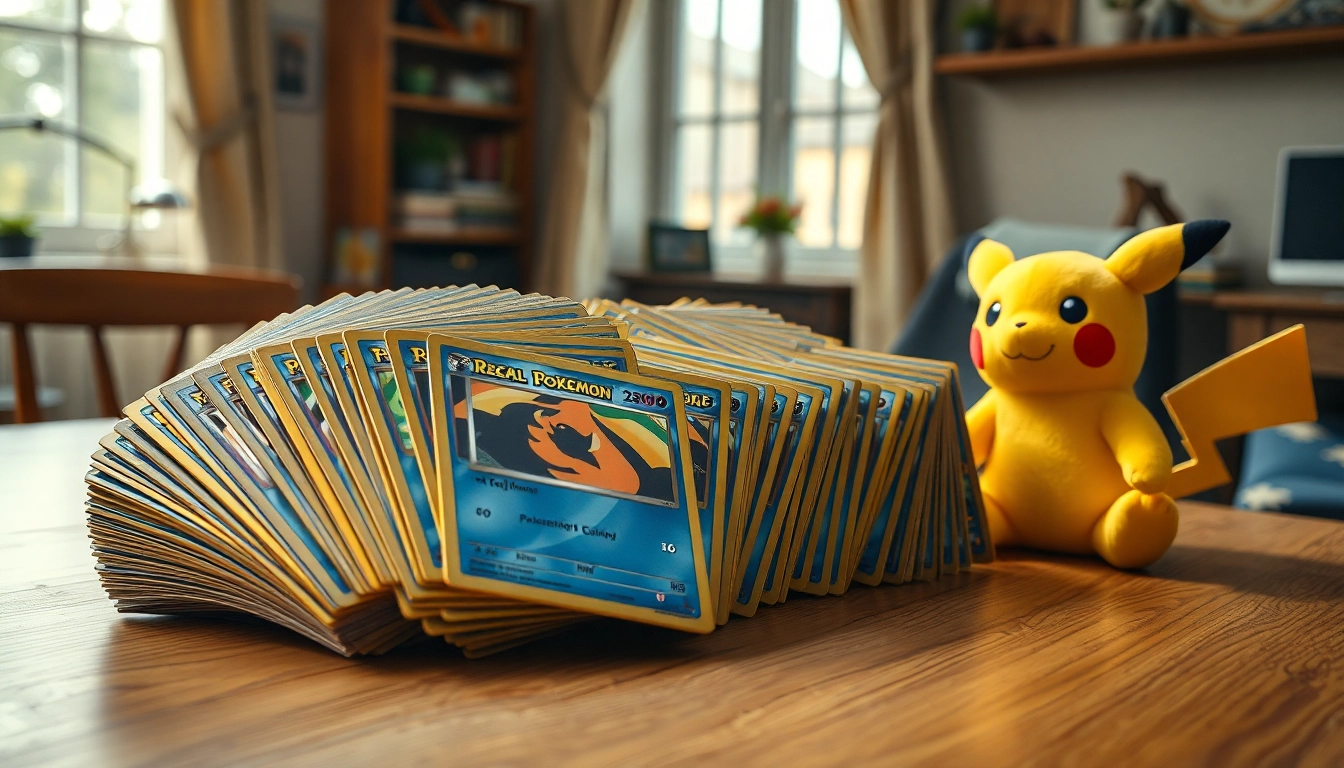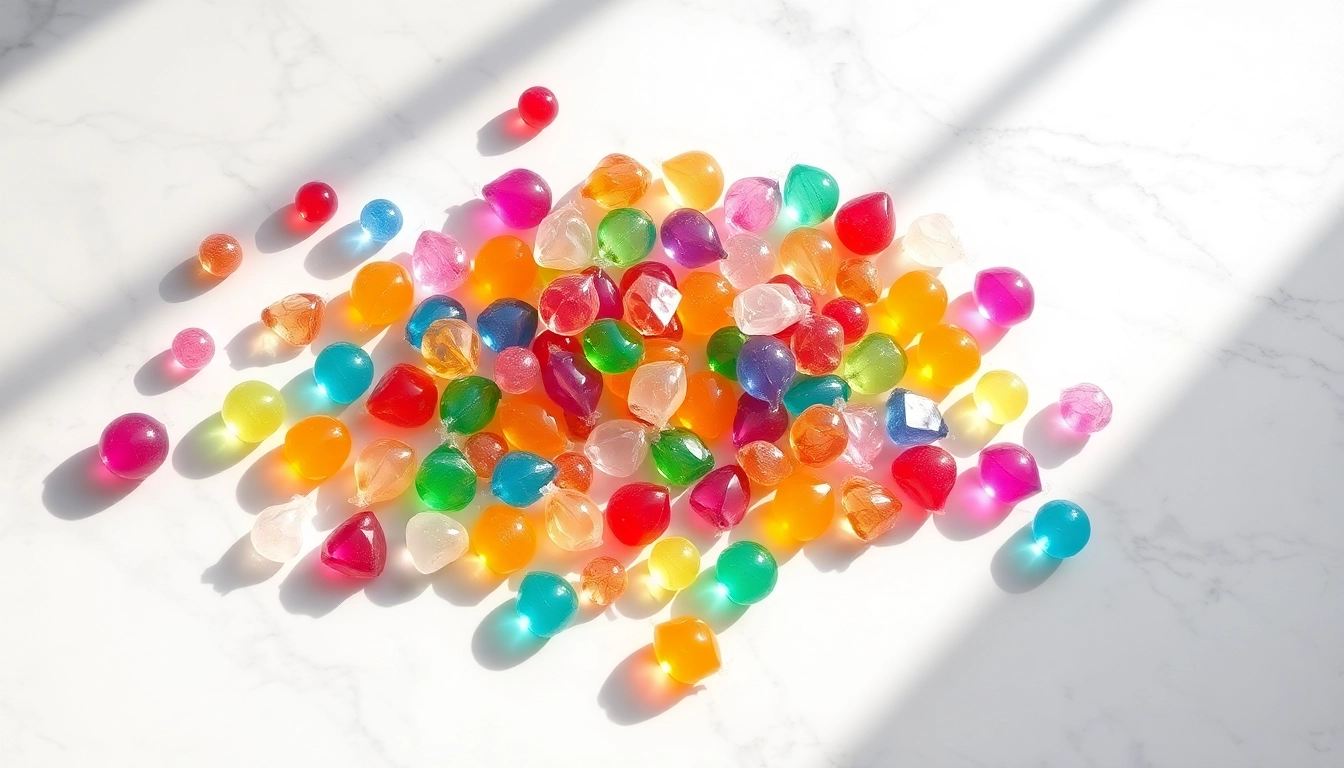Understanding Real Pokémon Cards
The world of Pokémon trading cards has captured the hearts of millions of collectors and players around the globe. With the rise of this beloved franchise, understanding real Pokémon cards has never been more essential. In this guide, we will explore what defines authentic Pokémon cards, their history, how to differentiate between real and counterfeit cards, and what makes them a desirable collectible.
What Defines Real Pokémon Cards?
Real Pokémon cards are official trading cards produced by The Pokémon Company. Authentic cards display high-quality printing, proper color saturation, and a consistent finish. They include intricate details such as the card number, rarity symbol, and a holographic feature on certain cards, which cannot be replicated by counterfeit cards. The materials used in real Pokémon cards are also of high quality, contributing to their durability compared to fake alternatives.
History and Evolution of Pokémon Trading Cards
The Pokémon Trading Card Game (TCG) debuted in Japan in 1996, introduced by Wizards of the Coast. This game allowed fans to engage with their favorite Pokémon characters in a new and exciting way. As it gained widespread popularity, it expanded globally, entering the hearts of both children and adults alike.
Over the years, the art and design of Pokémon cards have evolved significantly. From the original base set to current expansions featuring dynamic gameplay mechanics and engaging artwork, Pokémon cards have adapted to the changing landscape of gaming. The early cards are now considered vintage, and some have achieved legendary status among collectors, fetching high prices in auctions and trading events.
Identifying Authenticity vs. Counterfeit Cards
As the demand for Pokémon cards boomed, so did the emergence of counterfeit cards. Knowing how to spot fake cards is crucial for any collectible aficionado. Here are several tips to identify authenticity:
- Light Test: Hold the card up to a light source. Real Pokémon cards will have a blue core layer that allows a small amount of light to pass through, while fake cards will appear translucent or blurry.
- Printing Quality: The quality of the printing is a definitive factor. Authentic cards have crystal-clear images and fine text. When viewed under magnification, the dots used in printing will appear clear and distinct, unlike many fakes that exhibit an inconsistent, blurry pattern.
- Card Thickness: Authentic Pokémon cards have a specific thickness. If a card feels unusually thick or thin, it may be a counterfeit.
- Ruler Test: Although this method is not foolproof, measuring a card and comparing it to known authentic cards can reveal inconsistencies in size.
Where to Buy Real Pokémon Cards
With the rising popularity and value of Pokémon cards, knowing where to make your purchases is crucial. Let’s explore some of the best platforms and stores to acquire real Pokémon cards.
Top Online Retailers for Authentic Pokémon Cards
The convenience of online shopping has made it easier than ever to find authentic Pokémon cards. Some respected online retailers include:
- Pokémon Center: This is the official website for Pokémon merchandise, including trading cards. It offers a wide selection of current sets and accessories.
- TCGPlayer: A well-known site for trading card enthusiasts, it allows you to browse various listings from different sellers and compare prices.
- eBay: A marketplace where you can find everything from bulk card lots to rare, individually listed cards. It’s essential to check seller ratings to ensure authenticity.
- Amazons: Amazon has a variety of sellers, you can find sets and individual cards, but ensure you buy from trusted sellers with good reviews.
How to Choose a Reliable Seller in the Marketplace
Purchasing from reputable sellers is crucial in avoiding counterfeit products. When evaluating potential sellers, consider the following:
- Seller Ratings: Look for sellers with high ratings and positive feedback from previous customers.
- Return Policies: Trusted sellers usually offer return policies for their products, giving you peace of mind in case the cards do not meet your expectations.
- Authenticity Guarantees: Some sellers provide certificates of authenticity, particularly for rare cards, which adds an extra layer of trust.
Local Game Stores: Benefits and Opportunities
While online shopping is convenient, local game stores offer unique advantages, particularly for Pokémon card enthusiasts:
- Community Engagement: Local game stores often host events and tournaments, providing an opportunity to meet fellow enthusiasts and share knowledge about collecting.
- Hands-On Experience: You can inspect cards in person, which reduces the risk of purchasing counterfeit cards.
- Expert Guidance: Store owners and employees are often knowledgeable about the market and can assist you in making informed purchasing decisions.
The Value of Real Pokémon Cards
The value of Pokémon cards transcends their face value, influenced by various factors that make them coveted items for collectors and players alike.
Factors Influencing the Value of Pokémon Cards
Several key elements determine the market value of Pokémon cards:
- Rarity: Cards classified as rare are generally more valuable. This includes secret rare cards and limited editions.
- Condition: The physical condition of a card significantly impacts its value. Graded cards by professional organizations often fetch higher prices.
- Demand: Popular Pokémon characters, competitive playability, and nostalgia can all drive demand and influence pricing.
Popular Real Pokémon Cards and Their Market Prices
Some Pokémon cards are iconic in the collector community and can fetch high prices at auctions:
- Charizard (Base Set): This card remains one of the most sought-after in history, with pristine versions selling for thousands.
- Pikachu Illustrator Card: Often considered the holy grail of Pokémon cards, one of these sold for $250,000, setting records in the collectibles market.
- Shadowless Cards: These are early versions of cards without the drop shadow that became standard. Their rarity increases their desirability and value.
How to Determine the Condition and Value of Your Cards
Assessing the value of your Pokémon cards involves a careful evaluation of their condition. Here are methods to determine their status:
- Grading Services: Consider utilizing third-party grading services (like PSA or BGS) that assign a score based on condition. Higher grades often lead to higher value.
- Visual Assessment: Examine corners, edges, surface, and centering. Minor imperfections can significantly lower the perceived value of a card.
- Market Research: Stay updated on current market trends using online marketplaces to see how similar cards are selling.
Building Your Pokémon Card Collection
Creating an impressive Pokémon card collection involves strategic planning and extraction of value from each purchase. Below, we provide actionable strategies for effective collecting.
Strategies for Effective Collecting
To build a comprehensive collection, consider the following strategies:
- Focus on Themes: Many collectors choose specific themes like favorite Pokémon, generations, or sets. This can streamline collecting efforts.
- Attend Events: Participate in local tournaments and conventions. These gatherings often present opportunities for trades and encounters with other collectors.
- Stay Informed: Keep track of trends and news in the Pokémon TCG community to make informed decisions about which cards to pursue.
Tips for Trading and Selling Real Pokémon Cards
Trading and selling Pokémon cards can be just as rewarding as collecting. Use the following tips to ensure successful transactions:
- Know Your Cards: Being knowledgeable about the cards you are trading or selling is essential. Understand their value and why they are sought after.
- Negotiate Fairly: Be honest and fair in negotiations. Building a reputation as a trustworthy trader enhances your connections in the community.
- Document Transactions: Keep records of trades and sales, especially if dealing with higher-value cards. This includes agreements on condition, return policies, and prices.
How to Organize and Display Your Collection
Proper organization enhances the enjoyment of your card collection. Here are some effective methods:
- Binders and Sleeves: Store cards in binders with protective sleeves to prevent wear and tear while allowing for easy access.
- Display Cases: For rare and valuable cards, consider using display cases that can showcase your collection while protecting it from damage.
- Cataloging Systems: Use digital cataloging software or spreadsheets to track your collection, including card names, set numbers, and values.
Staying Updated in the Pokémon Card Community
As the Pokémon card market continues to evolve, staying engaged with the community can enhance your collecting experience. Here are ways to remain connected.
Joining Online Forums and Communities
Participating in online forums and social media groups focused on Pokémon cards provides a wealth of knowledge and networking opportunities. Consider exploring the following:
- Reddit Communities: Subreddits such as r/PokemonTCG and r/Pokemon can offer insights, discussion threads, and trading opportunities.
- Facebook Groups: These platforms host various groups dedicated to buying, selling, or discussing Pokémon cards.
- Discord Servers: Many collectors gather in Discord channels to chat in real time about trades and share information on market trends.
Event Participation: Tournaments and Collectors’ Conventions
Participating in events not only provides opportunities to expand your collection but also lets you connect with fellow enthusiasts. Being active in the community can yield valuable insights and friendships:
- Tournaments: Join tournaments hosted by local game stores or online platforms to test your skills and make connections.
- Conventions: Attend larger conventions like Pokémon World Championships that gather collectors, players, and fans from around the world.
Resources for Latest News and Updates on Real Pokémon Cards
To stay informed about new releases, valuable insights, and trends in the Pokémon card world, utilize various resources:
- Official Websites: Stay updated on Pokémon news, including releases and events, from official sources such as The Pokémon Company.
- Collectors’ Blogs and Podcasts: Following bloggers and podcasters who specialize in Pokémon cards can provide fresh perspectives and analyses.
- YouTube Channels: Many YouTubers dedicate their channels to Pokémon TCG, offering pack openings, strategies, and market analysis.
In conclusion, understanding and engaging with real Pokémon cards encompasses more than just acquisition; it’s about being part of a vibrant community driven by passion and shared interests. Whether you’re a new collector or a seasoned veteran, these insights will equip you with the knowledge and tools needed to navigate the fascinating universe of Pokémon trading cards effectively.



